The March Brown is one of the all time classic fly patterns, the origin of which must go back almost centuries.
I have always liked the March Brown. It's a simple, classic, well balanced and very "natural looking" fly pattern. The insect March Brown is a mayfly, and most March Brown patterns imitate that in some sense – as a nymph, an emerger, often tied as a wet fly, or as a dun in the form of a dry fly.
But as a fly pattern the March Brown has evolved far beyond that, and you will find Salmon March Browns, Steelhead March Browns and back when fishing for sea run sea trout in the ocean took off here in Denmark many decades ago, the March Brown wet would often be used as a saltwater fly.
Originally the March Brown is the popular name for the mayfly Rhithrogena germanica. In the US it's oftentimes used for Rhithrogena morrisoni, also a mayfly. Both species are early hatchers, often hatching in the end of the winter in late March and early April, hence the name.
You will also find the name Brook Dun applied to these flies, especially in the UK, and on the British Isles, the names Deel Cruik, Deul Cruick, Dule Crook or Devil Crook will also refer to March Brown like patterns.
As a fly pattern this has been known for a very long time, with lots of early references to the name March Brown.
The following is by no means a complete account of the history of the March Brown, but just a handful of references, showing how old, common and widespread - and varied - this classic pattern is.
As so often, the earliest is Dame Juliana Berners, who in her chapter on the month March (Marche) refers to a "donne flye" (March dun fly) in her book "A Treatyse of Fysshynge wyth an Angle" from 1496. This is by some believed to be the first reference to a March Brown like fly pattern, even though the name isn't mentioned verbatim.
The donne flye the body of the donne woll & the wyngis of the pertryche.
In other words a fly for the month of March described as "the dun fly, body of dun wool and wings of partridge". Not exactly a detailed pattern description, but close enough to have some resemblance to the more recent March Browns. See the original here.
This is more recent, from a manuscript by Jonathan Pickard from 1820.
And this is from a manuscript written by E. Lockwood on John Thomas Chippendale - this reference and the one above are generously provided by author and North Country fly expert Robert Smith, who also shared images of his own soft hackle and spider March Browns, which you will find below.
Orange and yellow silk twisted. Winged from a Partridges tail, bodied with Fox ears down and legged with a Tomtits tail.
The tomtit or tom tit referred to is most likely just a male tit, and not the NZ bird the tomtit.
From Charles Bowlker's Art of Angling, 1854. 3. March brown
About the middle of March this very excellent fly makes its appearance, and continues till the end of April. The wings are upright, and made of a feather from a pheasant's wing, or a dark mottled feather from the tail of a partridge; the body of fur from a hare's ear, mixed with squirrel's fur, and ribbed up with yellow silk, or hare's fur, mixed with a little yellow worsted; a partridge's or grizzled cock's hackle for legs; and two fibres of the feather which compose the wings to form the tail; the hook No. 7 or 8. This fly may be used with great success in warm gloomy days, from eleven o'clock till three; and when the Brown fly is on the water the fish will refuse all other kinds. There cannot be too much said in commendation of this fly, both for its duration, and the extraordinary sport it affords the angler. A reduced fly, of the same form and materials, will be found very killing in the month of August.
Wing style
As you can see from my flies in the top of this article, and from the many other versions of the classic March Brown, there are several ways that you can tie on the feather wing. Pryce-Tannatt uses the March Brown as an example in the "Chapter IX - The Third Lesson" in his classic book "How to Dress Salmon Flies". You can find the full book online on Archive.org. In this chapter he shows several ways of setting the wing strips, and illustrates the results with the plate shown below. The chapter in Pryce-Tannatt's book is by the way a very thorough set of instructions on how to tie a gut eyed March Brown if you should want to do so.
Contemporary books
Looking into more contemporary books on my own shelf, I found numerous references in the first three titles I checked: Perrault's Dictionary, Helleckson's encyclopedia and Mann's fantastic books on flies for salmon and steelhead. All three books have many entries on the March Brown, Perrault containing several pages with dozens of patterns. And I'm sure that if I were to check more of the titles I own, I'd find even more mentions of this classic.
Online research
Even though I do try to provide precise information about the subjects I cover on this site, I have long ago learned not to trust online resources! Everybody and his brother becomes an expert online, and I'm guilty as charged. I also play the role of the expert, and the very article you are reading now is an example. I do what I can to confirm all the facts that I'm presenting, and I really (like REALLY) try to convey proven facts and sound information. Of course it can slip, but I will then correct my errors as soon as I'm pointed in their direction. Books seem to be a slightly more accurate source of info, and when it comes to history - like it's the case in this article - books are often the only proper source for correct information.
But... books can be found online! Not the newest books, but when it comes to books such as many of those mentioned in this text, they are available in full on the web. The no less than fantastic Archive.org has thousands of titles scanned and accessible on their site. Older books, which are no longer under copyright protection, can be scanned and shared legally, and that's what Archive.org in particular excels in. A search in their book section after "March Brown" is a fantastic experience, since this fly pattern is mentioned thousands of times in the books and magazines they have in store. I haven't had the time or energy to look through even a fraction of what I found, because there's so much that it's almost too much. But if you want to dive into older literature on fishing, it's there for you to peruse.
The strip you see in the image next to this text is just a part of the search results when you type in "March Brown" in Archive.org's book search engine.
A most versatile pattern
Once you start looking, it quickly becomes obvious that there's a wealth of variations of this pattern. That's to expect when you consider its probable age. While it was most likely a wet fly or maybe a "in-the-surface", emerger like, fly in its original form, it's evolved into basically all kinds of flies over the years. You will find proper nymphs, weighted and unweighted, tied with beads, various emerger style flies, soft hackle and spider style flies, densely hackled dry flies as well as many variations of the wet fly, including flies for salmon, steelhead and sea run brown trout. The simple pattern with its generic colors simply lends itself well to almost any fly. I'm very sure that tying a March Brown fly for bonefish would be no challenge, and that it would catch bones.
My first March Brown
I wrote this in September 2019:
I intend to change that!
With the outset in this very universal pattern, I aim at tying several versions, which will include flies that are like the original wet fly as well as some, which are more modern interpretations meant for salmon, steelhead and my beloved sea run browns AKA sea trout.
My basic materials will be:
- Tail: Partridge fibers
- Rib: Yellow floss or tying thread
- Body: Hare’s mask wool
- Hackle: Partridge
- Wings: A feather wing, pheasant or turkey
I will improvise on this theme, and play with using golden oval tinsel for the rib and may change the feather wing with a combed barb wing, a hair or even a fur strip. I will tie the fly for salmon, maybe use a double hook, even play with a tube version, maybe, but overall I will try to stay as true as possible to the appearance of the original.
My first leg in this journey was of course to tie a March Brown wet fly, probably one fairly close to the original, although not quite in the Dame Juliana style and maybe not even the Bowlker style, where the feather wings are often upright, almost perpendicular to the hook shank. But classic at least, using a feather strip for the wing and trying to hit that classic feather winged wet fly look where the wing sweeps elegantly back over the body.
I do - like many other tyers - struggle with these feather wings. It seems simple, but in reality I find it very hard to get a feather wing to sit properly on the hook shank, and get compressed the right way, not rolling or folding.
“The wing will appear as a flat panel that is pleated at the mounting point where the quill barbs are crushed in a vertical stack” as it’s written in Leeson and Schollmeyer’s “Fly Tier’s Benchside Reference”. This book has about 40 pages dedicated to tying “downwings”, which includes numerous techniques for tying on classic wet fly feather wings AKA quill strip wings.
But no matter how many times I read it, study the pictures, see videos and practice, it’s still pretty random whether the feather wings on my wet flies come out pleated as they should or creased as they shouldn’t. Trying the “roofed” style as often used by Davie McPhail on wet flies doesn’t do much of a difference. I simply don’t master this technique. I will need to get some proper instructions some day, from someone who does.
I’m not unhappy with the flies. They come out as small beauties, and I really like the style. But a far majority of them just have these unbecoming folds in the wing and more than once in a while, I have to scrap a whole wing and start over.
The images in the beginning of this article show my first tries and variations, as does the image below.
Martin Joergensen
You will find many more of my March Brown interpretations in The March Brown Odyssey.
in reality I find it very hard to get a feather wing to sit properly
Huge interest
When I started this project in September 2019, I posted a few pictures of my first efforts online and got quite a tremendous reaction. People generally expressed their fondness of the March Brown, sympathized with my hardships in getting the feather wings to behave and were looking forward to the article. Several offered their help with patterns, pictures and information, and you will see most of them included in this article.
Poland
One of the first reactions was from Polish Adam Gie
I found it, Dame Juliana Berners, one pattern named March.
I think you know it.
Two parts of this pattern are obvious - tail and hackle from partridge feathers.
The male is much darker than the female, which is more beige. The male is more grayish with a claret accent, which the female doesn’t have.
The male is one of hardest patterns to tie. The female is easier.
Wings, body are different in many recipes but this fly's main trait is the partridge feathers.
Of course the dry fly is different, but there is no reason to tie a small dry March Brown. It's easier to use any beige/brown dry fly as a March Brown. The dry March Brown has a tail made from bronze mallard. This is a difference from the wet pattern.
Today people are tying March Browns with combined colors, and it's not correct. The male is dark, the female is light. I will send you some photos of March Browns tied by my friend Pawel.
Soon after, Pawel Zietecki wrote me a mail with some attached photos:
I like to tie wet flies on non standard hooks. I’m also sending two March browns tied on salmon hooks. I like those a lot.
You will also see a March Brown spider.
The last fly is not tied from a March Brown recipe (wing, tail and hackle is from speckled domestic hen), but it is tied according to the March Brown "ideology".
Cheers.
Denmark
A couple of Danish anglers and fly tyers had March Brown on their repertoire, and one, Rasmus Hansen, now living in Norway, told the story of a recently caught salmon from his local river:
The day also gave a "small" female measuring 33 inches and weighing approximately11 pounds.
Norway
I posted a few of my images on Instagram too, and got quite a lot of reactions. One of those who commented was Norwegian/Swiss fly tyer Fabien Moulin, who has been featured on this site before. He sent me some images of his takes on the March Brown, and as always his flies are impeccable, as you can see below.
He later wrote me back and sent some shots of a book cover and a page, mentioning the fly, attributing it to Norwegian salmon angler Erling Olsen.
He also sent me some of his own March brown inspired creations, which - like mine - span a large number of fly types.
And many more...
During my work with the March Brown, I constantly bumped into images and interpretations of this beautiful fly, and I got the permission from most of the tyers to post images of their versions in this article, so here's a handful for you to enjoy and be inspired by.
My own odyssey
This trip through the history of the march Brown led me to my vise and had me tying March Browns, March Browns and more March Browns. You see some of the more traditional versions on this page - the winged wet flies and even the soft hackle - but creativity took over and I started tying flies using the basic March Brown colors and materials, and went completely overboard, tying all kinds of March Browns: sea trout flies, salmon flies, tube flies, intruders... even a March Brown for bonefish as suggested above. You can find images, descriptions and recipes for all these flies in the article The March Brown Odyssey.
March Browns, March Browns and more March Browns
Hand picked for this article
- Log in to post comments


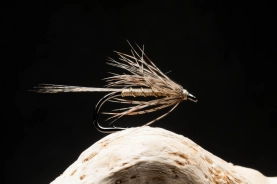
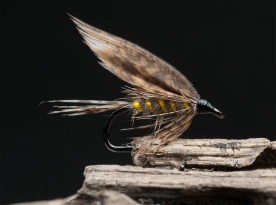
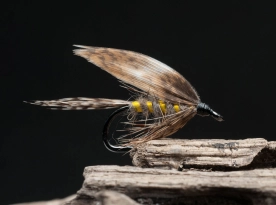
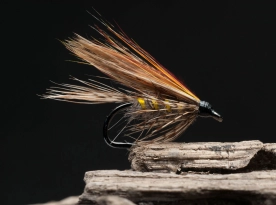

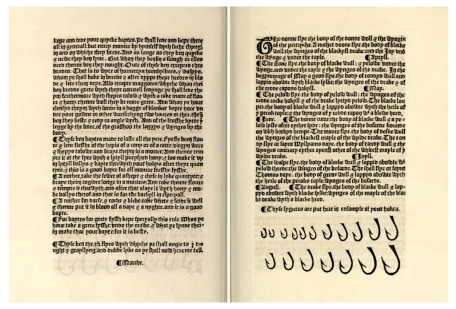
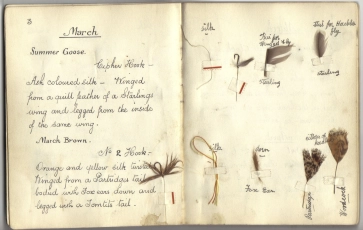
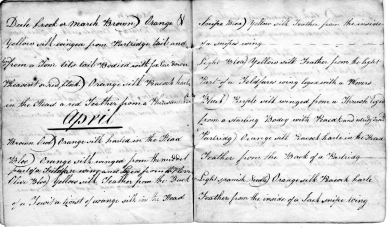
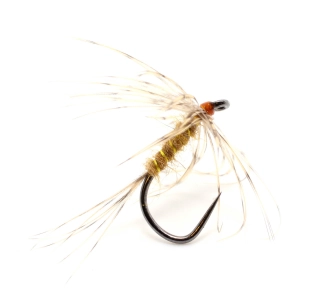
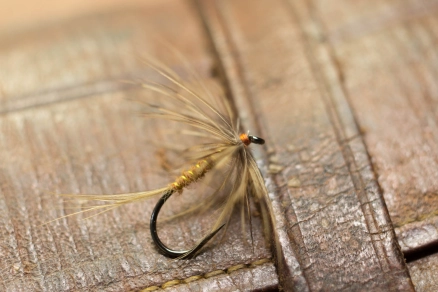
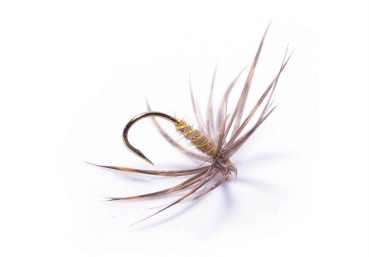
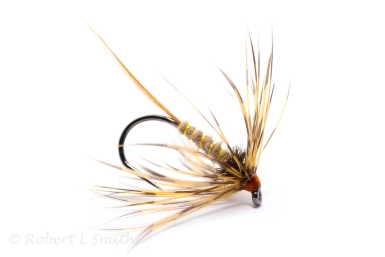
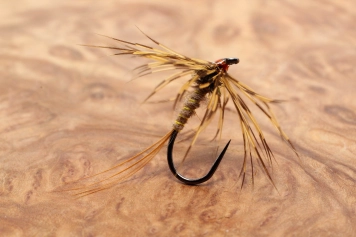
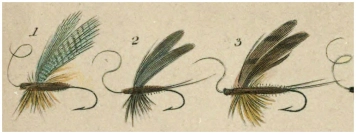
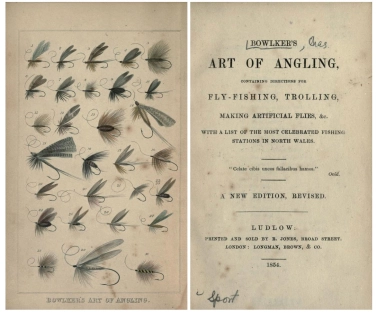
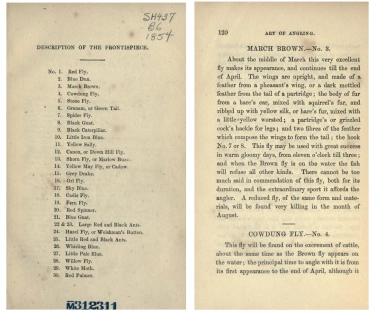
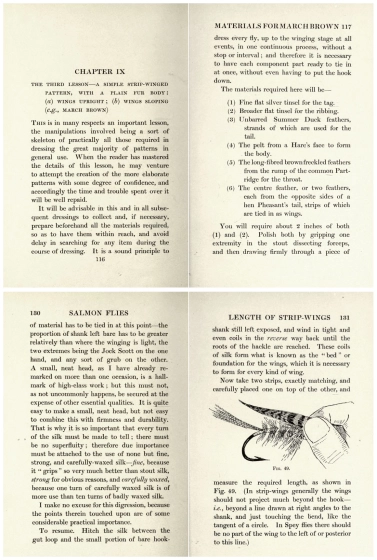
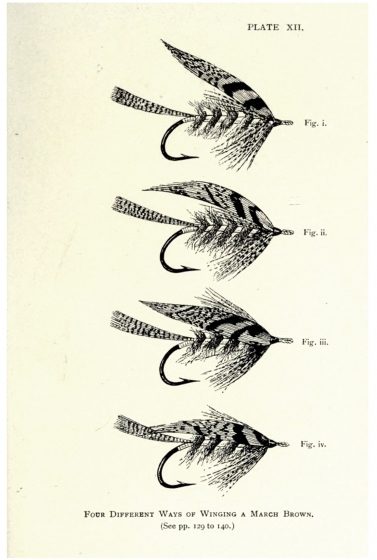
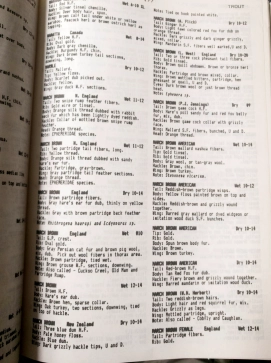
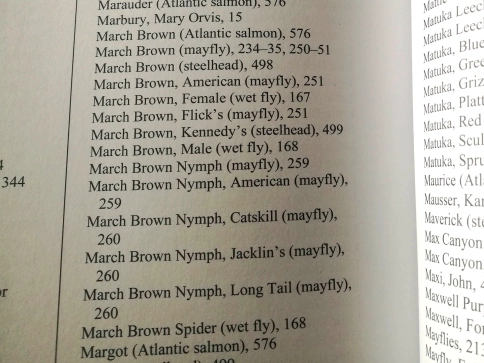

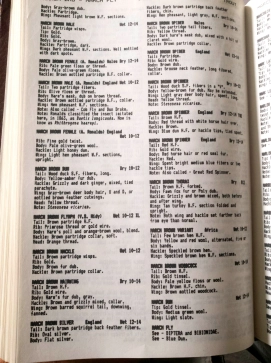

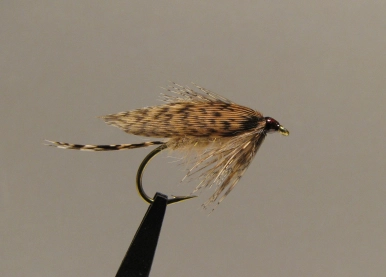
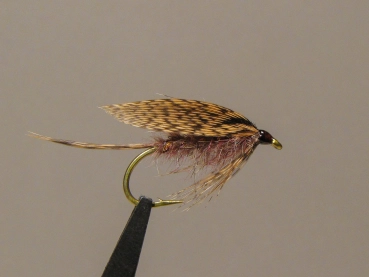
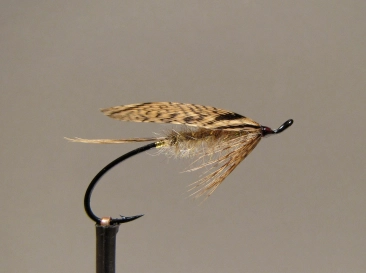
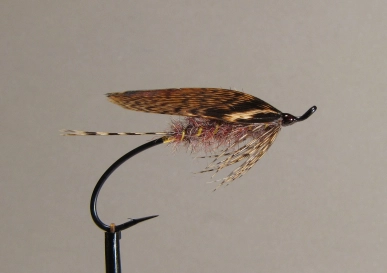
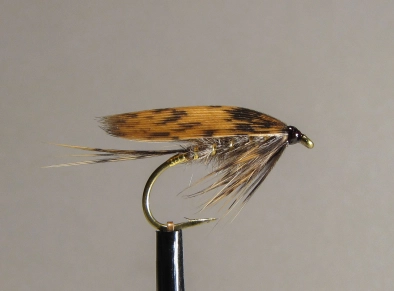
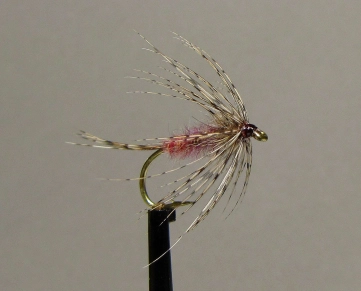
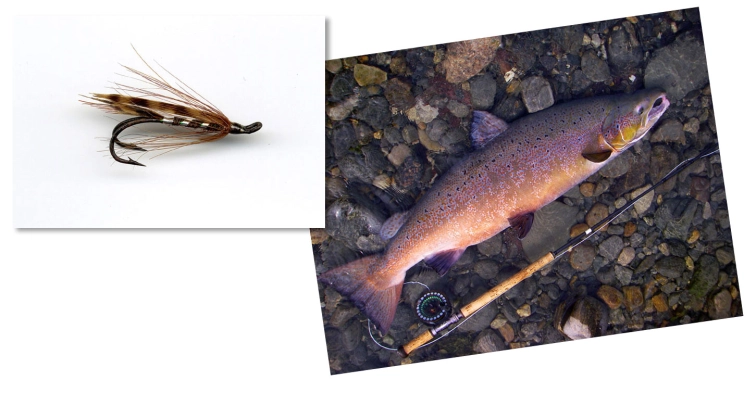
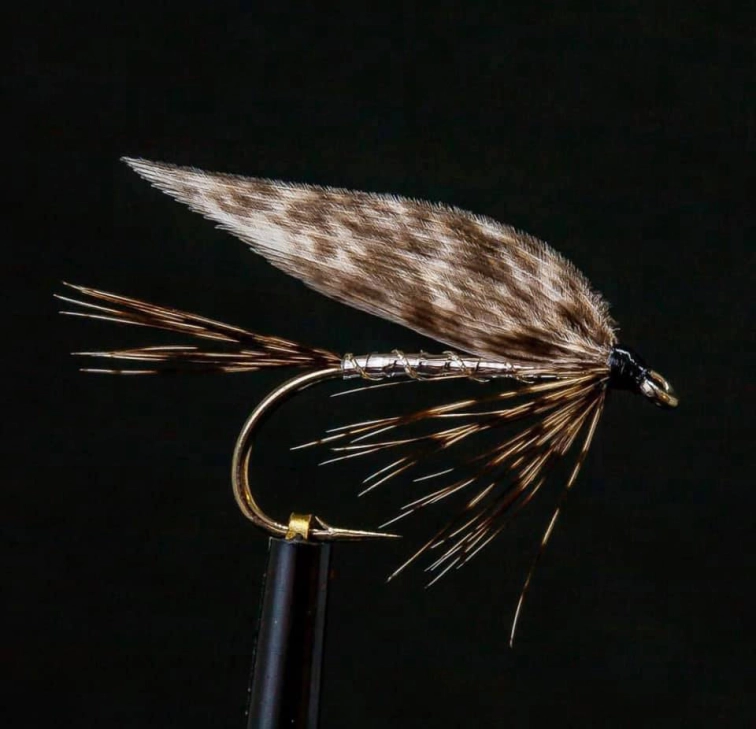

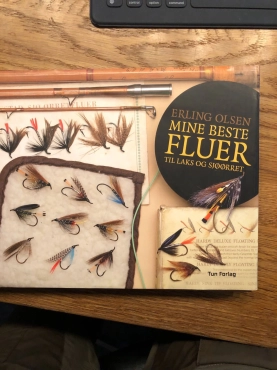
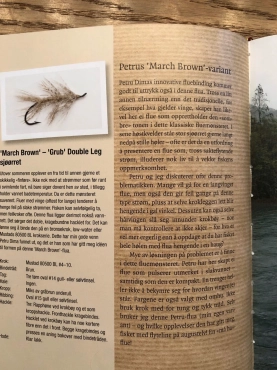
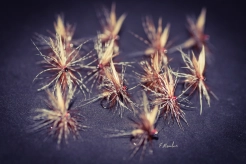
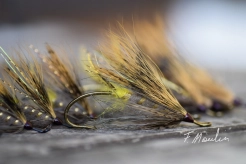
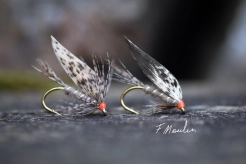
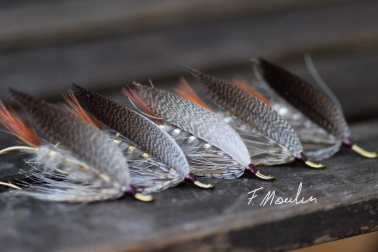
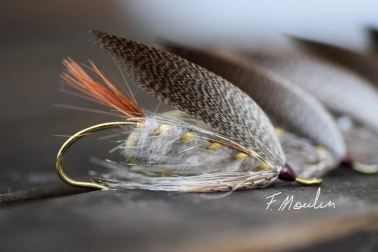
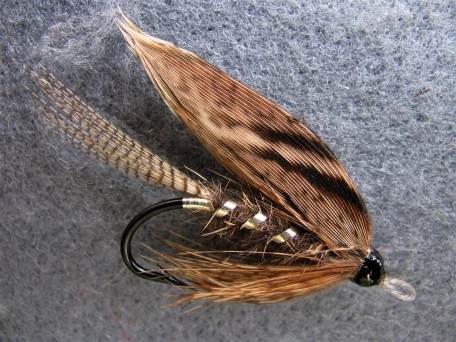
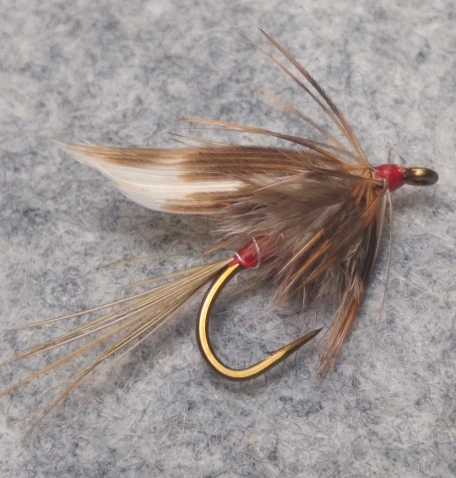
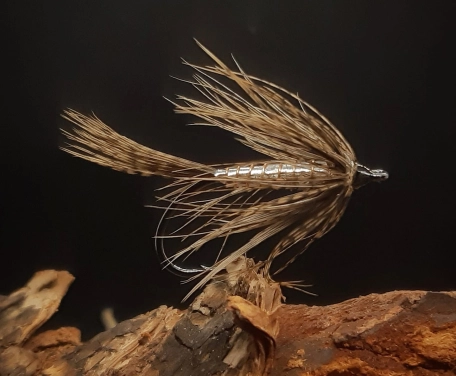
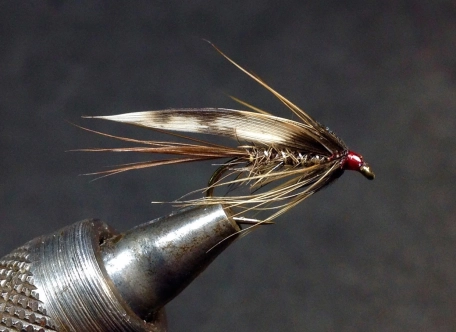
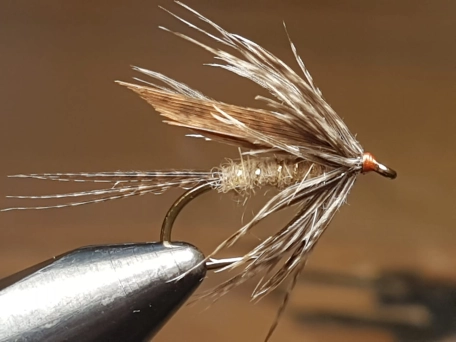
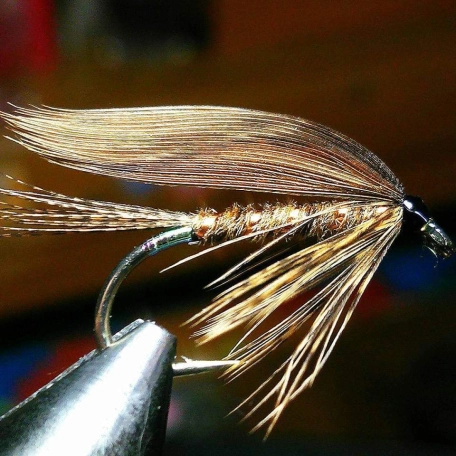
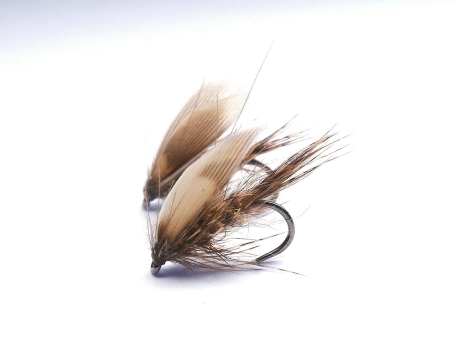
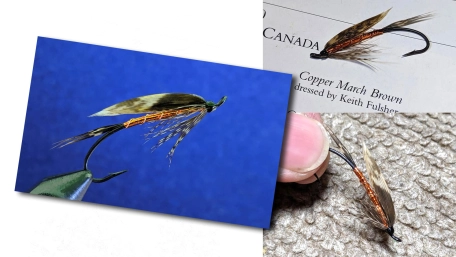
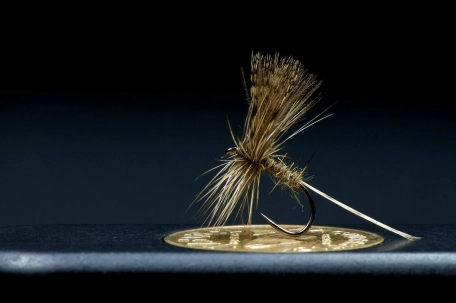
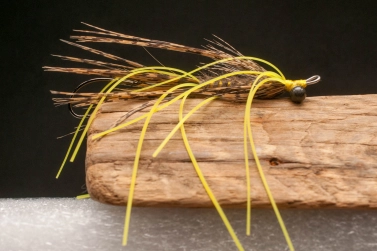
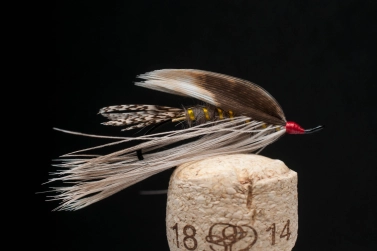
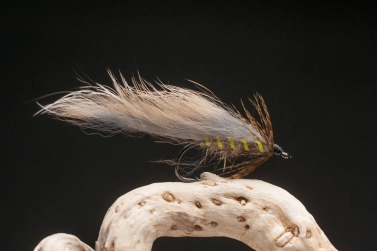
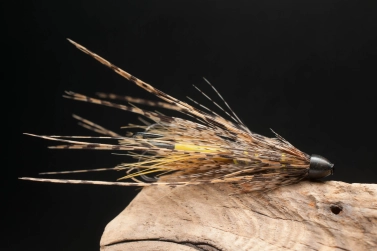
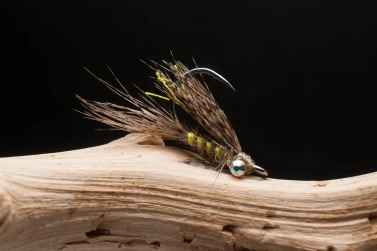
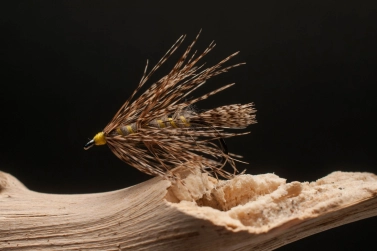
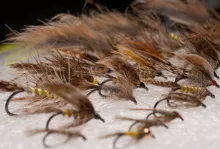









March brown Czec nymph style.
Many years ago Jiri Klima (the river god) invited me to fish with him in the Czech Republic and he showed me March browns with brass beads and how they fish it down stream in a combination of wet fly and Czech nymph style.